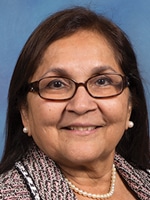Valerie Neff Newitt
July 2020—If a manufacturer assists a laboratory in setting up a new FDA-approved or -cleared test, the lab must make sure that the personnel who will perform the test participate in the verification or validation study. If the personnel don’t participate, there must be some way to confirm that performance is consistent with in-house studies performed by lab personnel.
That is a new condition of an existing requirement that is in the 2020 edition of the all common accreditation program checklist, released in June. It can be found in the introduction to the test method validation and verification section and in COM.40300 “Verification of Test Performance Specifications—FDA-Cleared/Approved Tests.”
In CMS validation inspections of CAP-accredited labs, the CMS “discovered that often only the manufacturers’ representatives were setting up machines, getting tests up and running, and doing validation studies necessary to start performing the test,” says Harris S. Goodman, MD, of Alameda Health System, Oakland Calif., and chair of the CAP Checklists Committee.
The CAP, too, became aware that in many cases when a new FDA-approved or -cleared test or instrument was introduced to labs, it was the vendor representatives, not the lab personnel, who were performing the verification studies, which are the lab’s responsibility, says Stephen J. Sarewitz, MD, vice chair of the Checklists Committee.

Dr. Sarewitz
“In the laboratory’s defense, it happened because such studies are labor-intensive and many labs are strapped for labor. Everyone is running a tight ship. So allowing manufacturer reps to do the verification was convenient.” But inspectors raised a concern, Dr. Sarewitz says: “If the lab personnel aren’t doing the verification, how do we know they can achieve the same level of performance that was documented by the verification studies performed by someone else?”
This concern has now been addressed in the form of the following statement in the checklist: “If an FDA-cleared or approved method was verified by someone other than the laboratory’s personnel (eg, manufacturer’s representative), the laboratory must ensure that the verification correlates with its in-house test performance by showing confirmation of performance specifications by laboratory personnel testing known specimens.”
“We’re primarily looking at accuracy, precision, and reportable range,” Dr. Sarewitz says, “which are the three major requirements for verification of FDA-approved instruments and methods. Lab personnel could take known patient samples of known concentration and run those and see if they can obtain the results that the manufacturer representative obtained, and then document those results.” Those records would be required to show compliance, he says. “In addition to the full verification records, there must be written evidence that lab personnel also did some of those studies.”
For labs not subject to U.S. regulations, the 2020 all common checklist now contains COM.40325 “Verification of Test Performance Specifications—Tests Approved by an Internationally Recognized Regulatory Authority—Laboratories Not Subject to US Regulations.”In the past, Dr. Goodman explains, if a test was not FDA approved but had a European Union CE mark, for example, labs still had to do the complete validation studies as if it were a laboratory-developed test. “They were not allowed to do the more limited verification studies that are now allowed” by COM.40325.
Validation applies to testing instruments that are not FDA approved or cleared. “For those,” Dr. Sarewitz says, “the laboratory must establish its own performance specifications, which is a more extensive study and requires looking at additional parameters. An important question came up: How about labs not subject to U.S. regulations, which may be using instruments that are not approved by the FDA and yet are approved by another internationally recognized organization? How do we make the process equivalent and fair for them?”
“Previously we were not taking into account the stress that accompanied international validation,” says Bharati Suketu Jhaveri, MD, immediate past chair of the CAP Council on Accreditation and a member of the CAP International Accreditation Committee and Inspection Process Committee.

Dr. Jhaveri
Dr. Jhaveri and other Council on Accreditation members reviewed the CE regulations. “We wanted to make sure we were comparing apples to apples and that the CE is indeed a highly monitored group like the FDA,” she says. “We decided that the CE requirements do fit appropriately with our accreditation requirements.” Thus international laboratories will no longer have to perform redundant validation studies to meet CAP requirements.
“This will save labor, time, and money,” Dr. Jhaveri says. “Labs will be under much less stress and pressure and will be able to bring on these tests faster.”
 CAP TODAY Pathology/Laboratory Medicine/Laboratory Management
CAP TODAY Pathology/Laboratory Medicine/Laboratory Management
